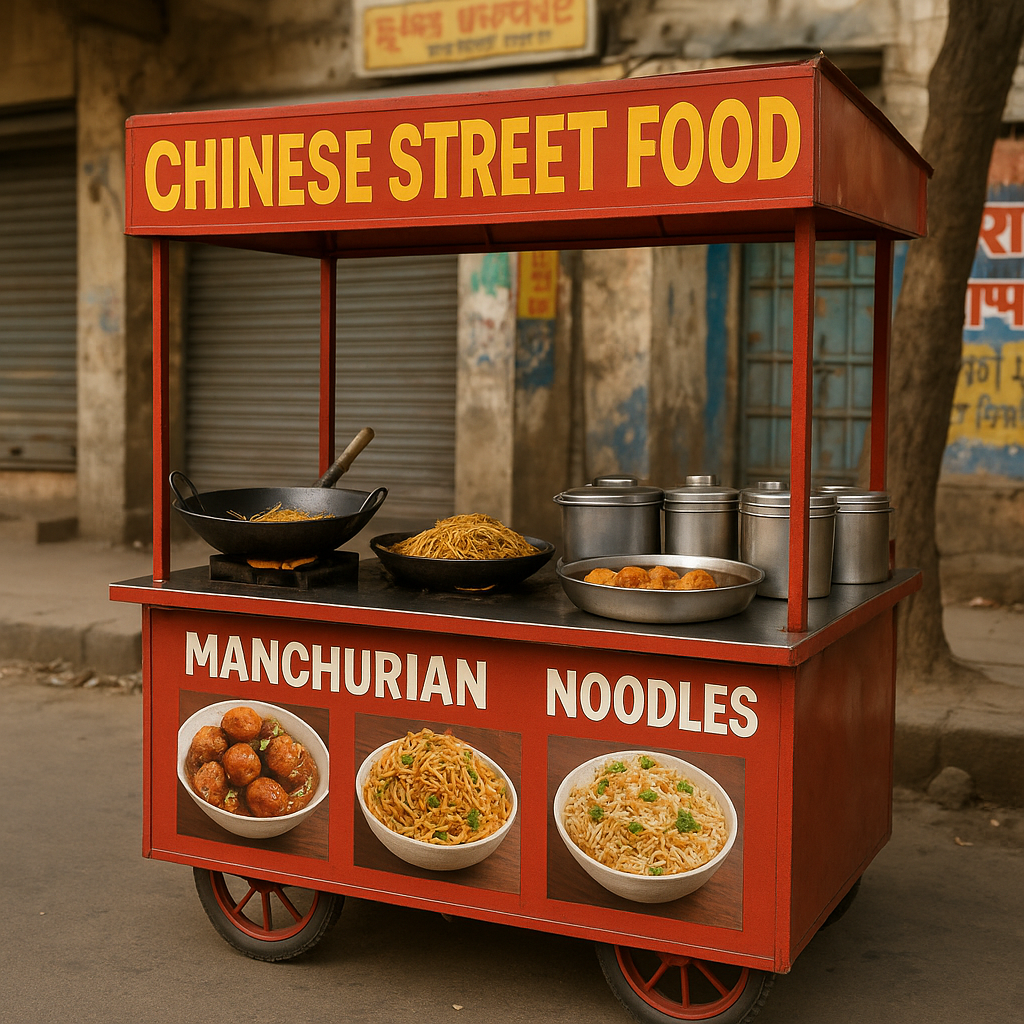
N.B. This photo is not real, it is an AI-generated one.
The Problem and Motivation Behind
“We were asked, what kind of work could you do together? So, we decided to explore street food… We found out that people like Chinese food, then we experimented with taste, and chose the best location to set up our stall.” – Soni.
Soni Kumari (22-year-old) lives in a small town in India. She left school due to financial pressure to help her family. As she did not continue her education, she was only offered low-income job opportunities that required working long hours for a low salary. Therefore, she kept looking for better jobs but with no success.
That changed when she joined an eight-day workshop as part of the Youth Innovation and Action Lab, where she joined other two girls and one boy, and started to think what kind of business they can create together. They chose to explore working in street food. After conducting a local market survey, they found Chinese food—like Manchurian[1], noodles, and boneless items—was in high demand
The Innovative Solution
“We wanted to know how to make the food tastier, how to attract more customers, and where to set up the cart to get good business.” – Soni
Soni and her team used a Design Thinking process, starting with market research. They spoke with local customers to find out which types of fast food were most popular and adjusted their recipes based on the feedback they received. They also tested different locations to see where they could attract the most customers.
They set up their food cart, cooking and selling freshly prepared Chinese dishes. By listening to their customers and making small improvements, they kept learning and adapting their cooking. “If a customer said something was missing, we fixed it. We kept improving,” Soni shared. Over time, more customers started coming, and the food cart began to generate regular income.
This income had a positive impact on the group. Soni and her teammates returned to school to continue their education during the day while working at the food cart in the evening. As their business became more successful, their confidence grew—and so did the support from their families. This was especially important for Soni and the other girls in the group. “At first, people hesitated to see girls at the stall. Now the hesitation is gone—and even our families support us,” Soni said.
Lessons Learned and Addressing Challenges
“We’ve learnt how to handle money, how to plan for profit, how to speak in the market, and how to save.” – Soni
The Youth Innovation and Action Lab (YIAL) provided with Soni and her team training in design thinking, market research, business planning and financial literacy that helped them better plan and manage their food cart business. They also learned how to work as a team and got supported by mentors. Still, their journey hasn’t been without its struggles. Choosing the right suppliers, learning how to divide responsibilities, and managing fluctuating daily earnings.
Reflecting on their experiences, Soni identified two lessons learned:
- Running a business boosts youth’s—especially young girls’—self-confidence: Soni’s journey shows how engaging in business can help young people build confidence in themselves, particularly girls who are often discouraged from working in public spaces. Initially hesitant to be seen working at a food stall, Soni and her team gradually gained the courage to manage and run their food cart proudly. “Some of us were hesitant—especially the girls. But once we started, we realised we could do it. Now, we are confident … Earlier, we only thought about getting a job. Now we believe in running our own business,” Soni said. This transformation not only shifted how they saw themselves but also how their families and community perceived them. “Now, our families are proud. They tell others—our daughters are running a business. That’s a big change,” Soni said.
- Earning income empowers youth to return to education: Soni’s experience shows that financial independence through youth-led business can remove barriers to education. Before starting the food cart, she had dropped out of school due to low wages from a full-time job. The income generated through the food stall gave her the freedom to stop working long hours and resume her studies.
Next Steps and Future Aspirations
“My dream is to turn our food cart into a restaurant, and then into a hotel. That’s my goal.” – Soni
Soni and her team dream of turning their food cart into a restaurant one day, and eventually a hotel. To prepare for this, they observe how nearby small restaurants work—looking at their menus, where they get their ingredients, and how they serve customers. They are also planning to grow their food cart business by buying better equipment, improving their recipes, and offering catering for events. Soni also plans to take a hotel management course to learn more about running a food business, including how to manage supplies, plan menus, and handle day-to-day operations.
[1] Deep fried cauliflower dish